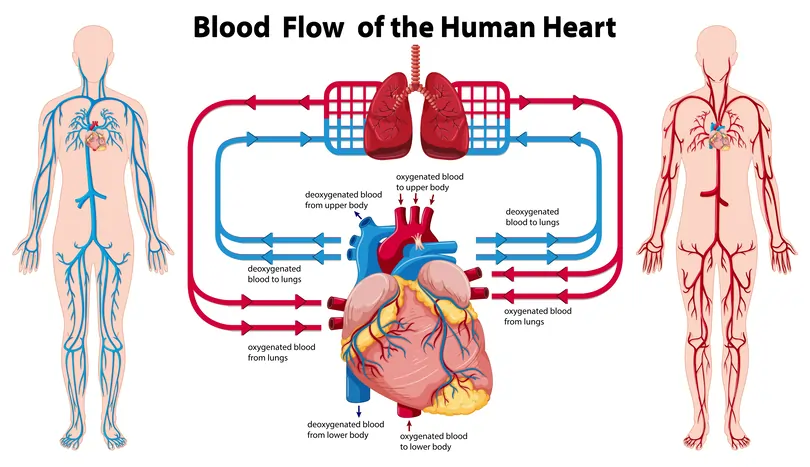Tackling 2020 PSLE science booklet A question on blood flow

In our pursuit of providing valuable insights and knowledge, we delve into the intricacies of the 2020 PSLE Science booklet. Specifically, we'll dissect a question regarding blood flow that has intrigued many students and educators alike.
PSLE Science 2020 Booklet-A Question
Blood flows through blood vessels A to D as shown below:
leg -- A --> heart -- B --> lungs -- C --> heart -- D --> leg
Which blood vessels transport blood richer in oxygen?
1) A and B only
2) A and D only
3) B and C only
4) C and D only
Solution
Let's break down which blood vessels transport blood richer in oxygen based on the given diagram:
In the given scenario where blood flows through the blood vessels from the leg to the heart, then to the lungs, and back to the heart before going to the other leg, so, the blood vessels that transport blood richer in oxygen are C and D only.
Let us explain why:
- Blood in vessel A: When blood leaves the leg (A), it contains less oxygen because it has been used up by the leg's muscles. So, vessel A carries blood that is not very rich in oxygen.
- Blood in vessel B: Blood then travels from A to the heart (B). At this point, the heart pumps the blood to the lungs to get oxygenated. So, the blood in vessel B is not rich in oxygen yet.
- Blood in vessel C: In the lungs (C), the blood receives oxygen. The lungs are where oxygen from the air we breathe is added to the blood, making it rich in oxygen. So, vessel C carries blood that is now rich in oxygen.
- Blood in vessel D: After leaving the lungs, the oxygen-rich blood returns to the heart (D). From here, it will be pumped out to the rest of the body, including the other leg. So, vessel D also carries blood that is rich in oxygen.
So, the correct answer is indeed option 4) C and D only, as these are the blood vessels that transport blood richer in oxygen.
 SG
SG  VN
VN 














